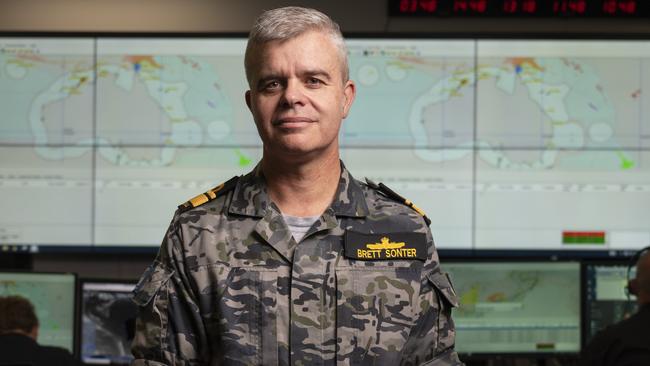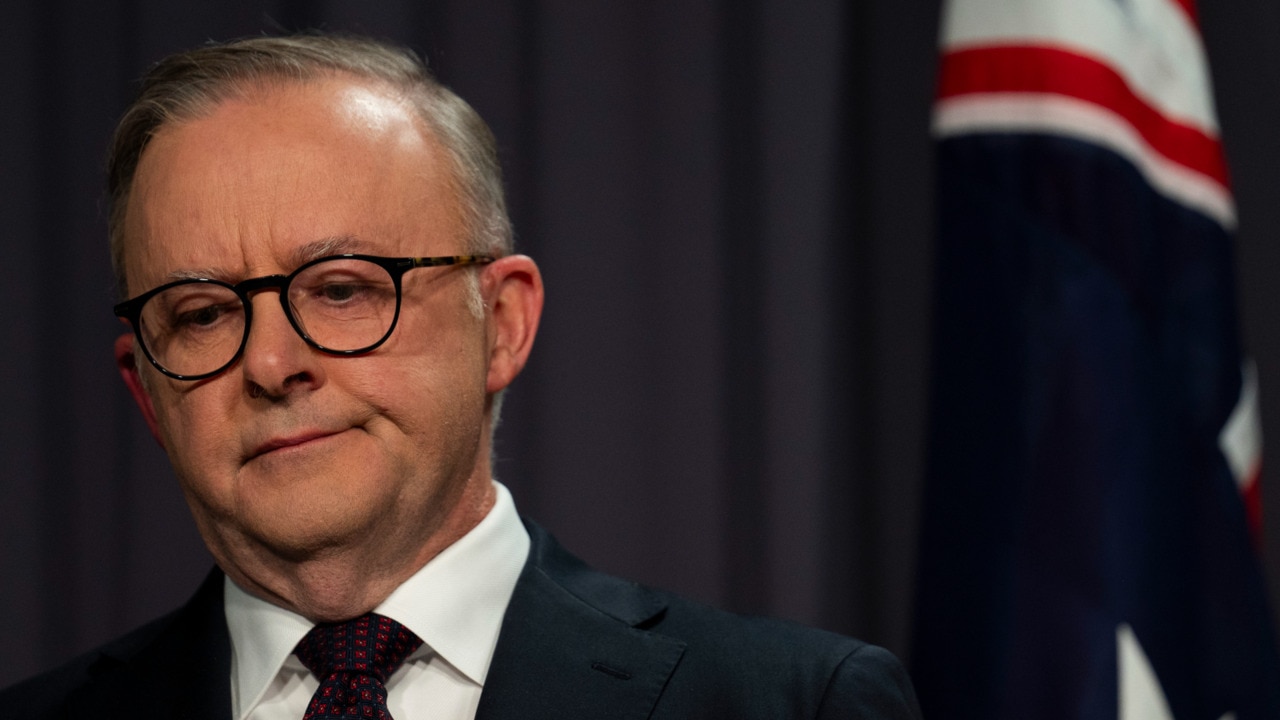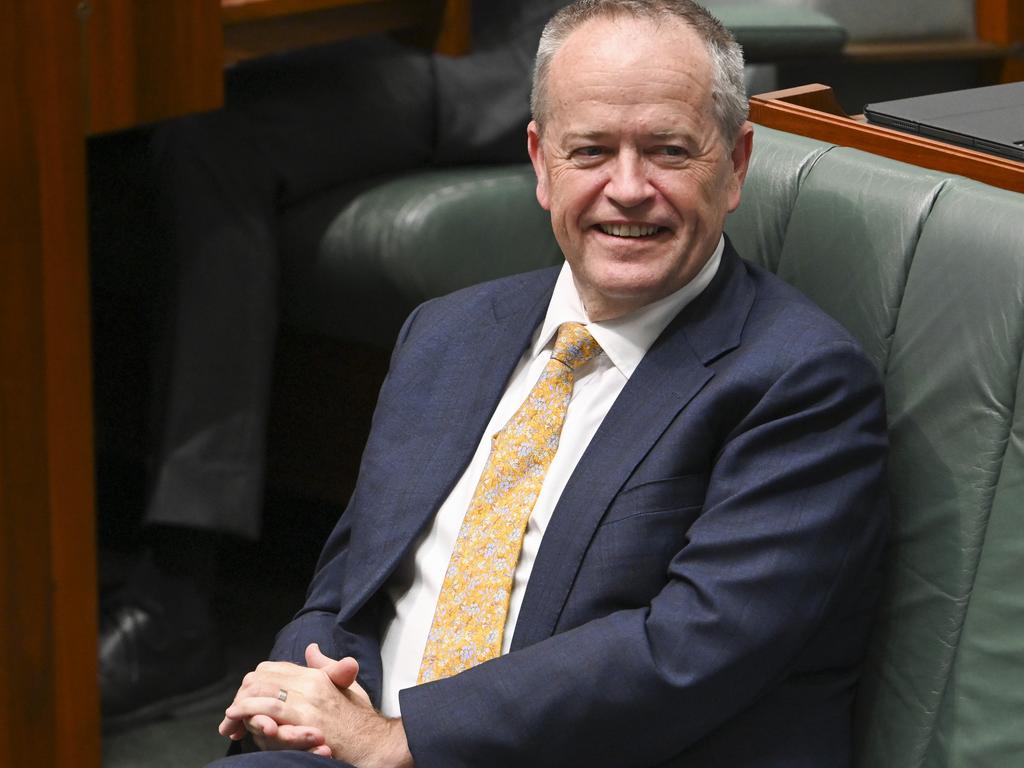Boat alert: Operation Sovereign Borders bracing for border threat
Operation Sovereign Borders has re-positioned personnel and hardware on the land, in the air and at sea amid an increased threat environment in Australia’s northwest.

The commander of Operation Sovereign Borders has re-positioned key personnel and hardware on land, in the air and at sea to detect and disrupt criminal people-smugglers and illegal fishers amid increased threats in Australia’s northwest.
Rear Admiral Brett Sonter, who replaced Justin Jones as OSB commander in January, has ordered an “enhanced posture” after a series of people-smuggling ventures linked with faster fishing boats and new tactics to breach maritime borders.
In his first interview since taking charge, Admiral Sonter said he had “overseen an up-tick in most of the operational functions but also the supporting functions … just to match the threat that we’re seeing”.
The 34-year navy veteran, who was US Pacific Fleet maritime operations deputy director before his OSB appointment, took on the role after 23 illegal arrivals were caught and sent to Nauru last September and November.
Following the NZYQ High Court ruling in November and the release of 149 dangerous non-citizens from immigration detention, OSB ramped up activity amid fears people-smugglers would prey on vulnerable asylum-seekers and economic migrants.
A third people-smuggling venture transporting 39 South Asian men landed near Beagle Bay, north of Broome, last month, stoking Coalition warnings that more boats could breach OSB defences.
Admiral Sonter, who recently returned from Indonesia where he discussed co-operative patrols and closer collaboration, said threat levels remained elevated but have not increased since November.
Asked about people-smuggling “pull factor” risks stemming from the NZYQ ruling, concerns about future High Court decisions and clashes over immigration legislation, Admiral Sonter said “we know people smugglers … they’re in it for a buck, they’re criminals, they’ll sell anything”.
“They generally (and) regularly … look at both the external, the domestic factors, they look at the political landscape, they look at the headlines,” he said.
“And whether it’s true or perceived, they sell a message that is just completely beyond the facts. It’s just lies because it’s a business model for them. We always see a persistent threat of people smuggling. Australia’s an attractive place. It is an attractive place for anyone to come and so there’s always a market.
“It’s important to know, as well, NZYQ was really about onshore processing … and the mature, effective OSB model – we don’t use that.”
Admiral Sonter has already released 11 “Zero Chance” direct messages across South Asia to “counter that false narrative that criminal people-smugglers are selling and saying actually, no, these are the facts … there is no settlement in Australia if you come irregularly via a maritime pathway … whatever they’re saying is not true”.
He said OSB’s enhanced posture to combat illegal fishers and people-smugglers had helped cut criminal activity but he observed a “conflation” in the use of fishing vessels “that ventures are using”, which has created a more challenging landscape.
Speaking at Australian Border Force headquarters in Canberra, where he oversees analysts on the OSB “Watch Floor”, Admiral Sonter said “every day, we’re looking at the intel, every day we’re looking at the risk and every day I’m moving the posture based upon all those factors”.
He said more than 1200 OSB staff work at headquarters, fly aerial patrols, sail at sea and conduct patrols every day of the year under a joint taskforce made up of 16 government agencies.

The OSB commander, who has a “direct line” to and speaks regularly with Home Affairs Minister Clare O’Neil, confirmed all 39 illegal maritime arrivals caught at Beagle Bay and sent to Nauru were male adults associated with “one venture”.
“We’ve enhanced the number of people and the capability in Broome. We’ve enhanced the amount of people for a few months now up in Truscott (far north Kimberley),” he said.
“That’s all about having that response time, those reactions not just to ventures but to other things like illegal fishing because we know that Australian citizens expect us to do a mission, which is protect their borders (and) protect the wealth of Australia.
“Sovereignty is really the … fundamental element of democracy. So we have responded and we’ve got people up there. The challenge is, it’s just such a big area. You could have a multitude of people and it wouldn’t be enough but I think we’re well postured.”
In the wake of warnings last year by Australian Border Force Commissioner Michael Outram about pilot shortages, blowouts in deep-level maintenance timeframes and increasing reliance on Defence, Admiral Sonter said OSB had scope to draw on different assets and personnel.
He said OSB was using uncrewed aerial assets and focused on “wide area, persistent surveillance where you see a layer of things”.
He said if you take a relatively small 600km section of Australia’s coastline between the Kimberley Marine Park to Broome and include the economic exclusion zone, “that square geography is about twice the size of Victoria”.
“When you look at wide area surveillance … you’re looking at persistence over a wide area, because I describe the area as just one section that I have to look at and … my remit is all of Australia. Where we can intersect assets (such as drones and satellites) it just helps us.”
Admiral Sonter said “sharing what we see against the common threat is important to me” and confirmed OSB was working with Indonesia and other South Asian nations to work collaboratively against a “transnational threat”.
“We are seeing a lot of movement of people just generally,” he said.
“And that’s not the concern. The concern is when we start to see people that are irregularly moving and trying to get around the generous migration policies that we have.
“My experience was they (Indonesian authorities) were very willing to talk about it and they see it as a common problem. That Rohingya boat (that capsized last week) was tragic. Part of the mission here is to prevent that. To prevent vulnerable people from taking unsafe journeys across the water.”
Amid Coalition claims the Albanese government has dismantled key border protection measures including temporary protection visas, Admiral Sonter said OSB’s three key pillars remained.
“It’s deterrence and disruption run by the AFP. There’s the detection, intercept and transfer, which is really the on-water assets. And then there’s the regional processing, which is the third pillar,” he said.
“I sit over the top of all those. Those three pillars of Operation Sovereign Borders have always been there and it’s a mature, tiered system that works in combination. Obviously, we want to try and deter and disrupt before anyone gets on unsafe boats as much as we possibly can. But my observation is the model works.”
After The Australian last week revealed Indigenous tracker concerns about new arrivals, the ABF sent officials to investigate.
Admiral Sonter said while ABF confirmed materials found were “directly correlated to the previous (February) venture”, he welcomed all reports made through the Border Watch program.
The Australian last month reported that some of the recent illegal maritime arrivals sent to Nauru have returned home. It is understood some of the arrivals, who mainly consisted of Pakistani and Bangladeshi men, have identified as economic migrants.








To join the conversation, please log in. Don't have an account? Register
Join the conversation, you are commenting as Logout